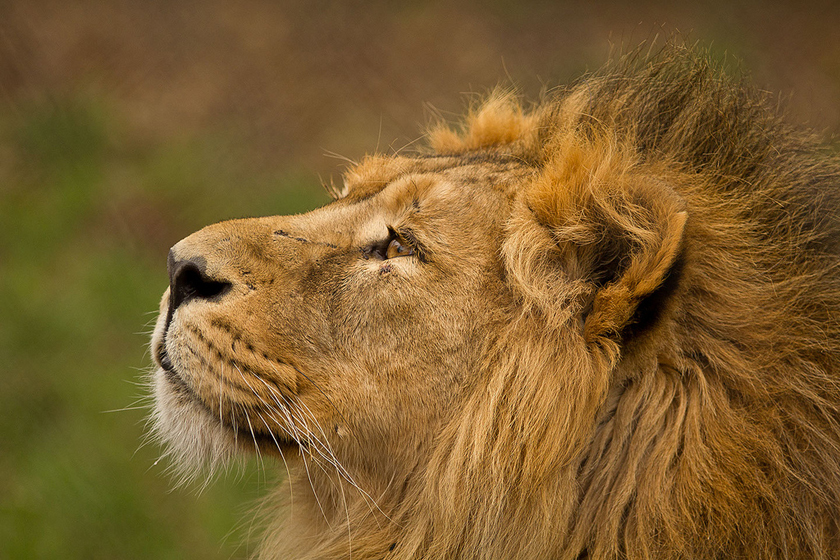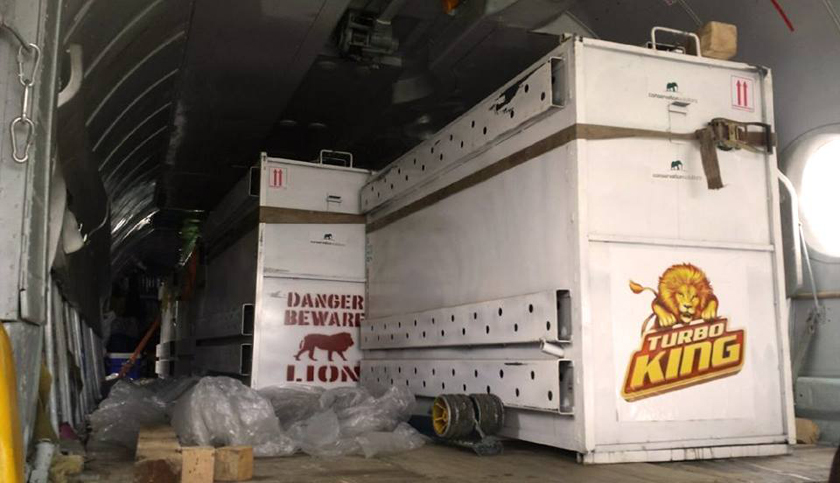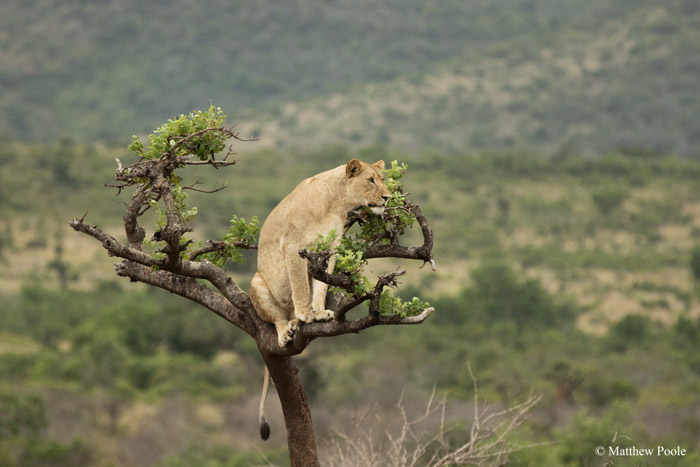Part Of Rwanda’s Continuing Recovery: The Return Of Lions
Lost in the wake of the country’s 1990s genocide, big cats make a comeback by special air delivery this week.
By Vicki Croke

Cattle herders poisoned Rwanda’s few remaining lions in the aftermath of the country’s genocide in the 1990s. This week, lions are being returned to the country. Photo: John Brierley/Flickr.
They flew out of South Africa Monday night by chartered plane, held in steel crates bearing a red stenciled message that was both a warning and a celebration: DANGER BEWARE LION.
This week, for the first time in more than 15 years, wild lions live in Rwanda. Seven to be specific. Five females and two males.

The seven big cat pioneers were tranquilized and flown from South Africa to Rwanda aboard a chartered plane. Photo: African Parks/Facebook.
The big cat pioneers, who are expected to mate and start to repopulate this lionless land, had been flown from South Africa. They arrived yesterday in the country that lost 800,000 people in the genocide of 1994, and then lost much of its wildlife in its aftermath.
According to The Guardian: In the dark days of the mid-1990s, “cattle herders poisoned Rwanda’s last remaining lions after parks were left unmanaged and occupied by displaced people.â€
But yesterday the lions returned. The translocation of these magnificent cats was organized by the conservation group African Parks. Monitored by veterinary teams, the lions, from two small South African reserves, flew out of Johannesburg on Monday night. On Tuesday, as cheering school children lined part of the route, according to African Parks, the lions were driven by truck to Akagera National Park. After an expected 14-day quarantine within an enclosed area of the park, the lions will be released and monitored via radio collar.

For more than a year, the lion translocation organizers have been meeting with local people to talk about the effort. In this photo, an educational play about lions is performed. Â Photo: African Parks.
The individual animals are described in a post on the  Facebook page of African Parks:
The five “beauties†from Phinda include one 10 year old female and four lionesses between two and a half and four years old. They each weigh between [396 and 418 pounds]. The two male lions from Tembe are three and a half and four and half years old. They each weigh around [550 pounds]. They are known to have sired at least 12 cubs and to have an affinity for their female counterparts so we hope they will continue their wily ways in Akagera with the “beauties†from Phinda.
Organizers say much has been done to ensure the safety of these lions. Conservation today in many areas around the world is marked by security measures–bolstered by armed guards and miles of fences. Akagera, where the lions will live, is completely enclosed in electrical fencing. And a big part of what the group African Parks focuses on is law enforcement. According to News24:
Sarah Hall, Tourism & Marketing Manager for Akagera Management Company, told Traveller24 that the park will ensure the new lions will not suffer the same fate as their predecessors, where mismanagement led to their extinction.
“The park has been fenced with a 120km electrical fence, funded by the Government of Rwanda, and is patrolled daily by a team of 42 fence attendants,” Hall said.
“There has [also] been a large scale community sensitization program over the last one-and-a-half years, alerting local people to the reintroduction plans, the importance of lions in conservation and for tourism,” she said.

The seven lions were flown in steel crates from South Africa to Rwanda. Photo: African Parks/Facebook.
The project brings collared lions into a fenced-in park, a park, they say, with plenty of food. According to Agence France Presse:
The park is fenced, but the cats will be equipped with “satellite collars” to reduce the risk of them entering inhabited areas.
“The collars have a two-year life, by which time the park team will have evaluated the pride dynamics and only the dominant individuals in each pride will be re-collared,” the park added.
Akagera offers plenty of food for the top predator, and is home to multiple antelope species, buffaloes, giraffes and zebras, as well as leopards and elephants.
According to the Australian Broadcasting Corporation:
Peter Fearnhead, the head of African Parks — which helps run the 112,000-hectare Akagera bordering Tanzania — said the reintroduction was “a ground-breaking conservation effort for both the park and the country of Rwanda”.
While lions hold their own in some parts of Africa, they are critically endangered in others. According to The Guardian:
The International Union for Conservation of Nature listed the lion as vulnerable in an update this month of its red list of species facing survival threats. It noted lion conservation successes in southern Africa, but said lions in west Africa were critically endangered and rapid population declines were also being recorded in east Africa.
African Parks cited human encroachment on lion habitats and a decline in lion prey as reasons for the population drop. It identified a trade in lion bones and other body parts for traditional medicine in Africa, as well as Asia, as a growing threat.

